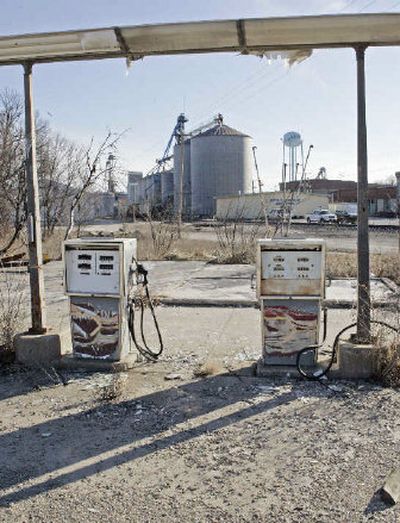Fertile fields

LADDONIA, Mo. — For three long years, Roger Young barnstormed through Missouri, speaking in small-town churches, VFW halls and community centers, asking any farmer who would listen to invest his hard-earned money in a new ethanol plant.
Young eventually raised more than $14 million, bit by bit, collecting $15,000 here and $30,000 there. The ethanol plant is under construction in this rural northeast Missouri town and like many others, is owned largely by farmers.
“The financial part it — I would never, ever, ever want to go through that again,” Young said. “You’d be on a high one day, and the next day you’re bouncing your butt off the floor.”
That might have been true in 2002. But the world has changed since then. Just ask Ron Miller. As head of ethanol producer Aventine Renewable Energy Inc., he also raises money to build ethanol plants, but is courting a decidedly different crowd of investors.
In mid-February, Miller attended a meeting in New York with Aventine directors who work for Metalmark Capital LLC, a spinoff of Morgan Stanley Capital Partners. He hardly sounds stressed out when it comes to pitching ethanol on Wall Street.
“I think if we come up with reasonable deals, yeah, the money will be available,” he said.
In the past year, federal energy regulations and the rising price of oil have spurred an investment boom in ethanol plants, bringing unprecedented levels of private equity into an industry once characterized by farmer-owned co-ops.
Of 42 new ethanol plants under construction nationwide, only six are farmer-owned, according to the Renewable Fuels Association trade group. That’s a stark contrast to the ethanol boom of the 1990s, when farmer-owned co-ops built more than half of all new plants, according to the Federal Reserve Bank of Kansas City.
The investment shift could have far-reaching effects on who owns the ethanol production industry, an issue of particular interest to farmers. The network of plants and refineries is seen as a beacon of economic hope in rural America, where the traditional pillars of agriculture and manufacturing have lagged.
“I think it’s kind of a double-edged sword,” said Geoff Cooper with the National Corn Growers Association. “We obviously want to see the industry succeed, and it is going to take lots of effort and lots of different groups and different resources. At the same time, we’d like the money that’s invested in these plants to stay in these rural communities.”
A corporate takeover of the fledgling industry has farmers worried, said Pat Stemme, a farmer who invested $50,000 in the Laddonia ethanol plant with her husband Dave.
“That is a fear that Dave and I have, that big business will come in at some point after we’ve done the groundwork and buy out the ethanol plants,” Stemme said. Ethanol “is a chance for farmers to be wealthy guys, instead of just struggling guys.”
Economic ripple effects are already being felt from the Laddonia ethanol plant, where a crew of roughly 60 full-time employees aims to finish construction by July. Laddonia’s abandoned Main Street Café reopened this month as the Corner Cafe. Waitress Maureen Young said the lunch hour is busy with locals and construction workers.
The ethanol plant is being constructed and partially financed by Broin Companies of South Dakota, which builds plants around the country.
Chief Executive Officer Jeff Broin said farmers made ideal investors during the late 1990s, when the industry was getting off the ground. As corn producers, they had a vested interest in facilities that raised the price of grain.
Institutional investors stayed out of the business because they had seen ethanol production grow and collapse in the 1980s, Broin said.
That changed in the late 1990s when ethanol demand increased, driven in part by federal laws requiring gasoline to contain cleansing additives. The true investor sea change came in August, with the passage of the 2005 Energy Policy Act, experts say. The bill set a new standard requiring the U.S. to use 7.5 billion gallons of renewable fuels by 2012, including ethanol and other fuels like biodiesel.
The United States now pumps out 4.3 billion gallons of ethanol, with another 2 billion gallons of capacity under construction.
To meet the federally mandated production, larger investors have stepped in to build larger plants, said Tom Murray, managing director and co-head of WestLB Loan and Debt Capital Markets Group.
“I think now that other people are building these things, (farmers) are going to just focus on producing as much corn and other types of grain to feed plants” as possible, he said.